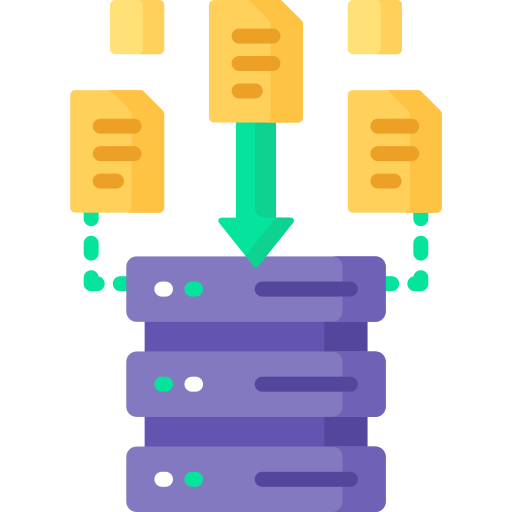Data Collection

Global Digital Infrastructure
Understanding digital infrastructure on a global scale is a complex task, requiring access to a vast network of diverse resources. The creation of digital infrastructure is a multi-dimensional process involving the cooperation of state and non-state actors. Countries often delegate tasks to state-owned or private firms due to a lack of expertise and competency. These firms offer counseling and expertise during all project phases, employing skilled employees to plan and build infrastructure and maintain working digital networks.
This contractual relationship is key to large-scale digital infrastructure projects, requiring general IT knowledge, the ability to plan and build modern digital networks, suitable patents, custom-made software solutions, and capable hardware. The role of the Original Equipment Manufacturer (OEM) has also become increasingly important. OEM providers, like Huawei or ZTE, offer solutions to network operators for management, support, and maintenance, allowing operators to focus on their core business. Operating & Management costs (O&M) play a crucial role in business profitability, and all-in-one integrations by companies can reduce these costs significantly.
Huawei: A Global Leader in Digital Infrastructure
Huawei, a multinational technology conglomerate headquartered in Shenzhen, is a global leader in soft- and hardware solutions for digital infrastructure development. Its portfolio includes 5G technologies, server hardware, and internet connectivity infrastructure. Huawei has significantly contributed to developing digital infrastructure within China and has employed an aggressive expansion strategy to gain market shares globally. Nearly 50% of its 195,000-strong workforce works in R&D departments. Huawei is also a global leader in ICT-related patent registration, with its patent portfolio reaching nearly 100,000 in 2021, including more than 40,000 patents in Europe and the USA.
Huawei’s regional and international presence has far-reaching implications for digital landscapes and ICT-related infrastructure development. Examining Huawei’s position in the digital infrastructure sphere serves as the basis for further country-specific assessments. The company’s financial performance, strategic ambitions, and important business operations across continents are detailed in Huawei’s 2019 annual report.
Data Collection for Country-Specific Assessments
The report was utilized to understand key metrics and data points about Huawei’s role as a digital infrastructure developer. In 2019, China represented 59% of Huawei’s total sales revenues, followed by Europe, the Middle East, and Africa with 24%, and the Asia Pacific region with 8.2%. Company internal trade and contract data are often kept confidential, increasing the difficulty of finding trustworthy data about general digital infrastructure projects for individual countries. To obtain information about country-specific digital infrastructure projects, three data sources were selected:
- Huawei’s Annual Report, the Global Connectivity Index, and publicized information
- Data about total export and import shipments of server hardware in 2018 and 2019 by region and country [1]
- Data from Infrastructure Outlook about country-specific investments in telecommunications infrastructure [2]
Analysis and Findings
The collected data was used to triangulate countries with a high ratio of investments in digital infrastructure by GDP and per capita. A trend was visible during the data collection and evaluation. Generally, Huawei’s regional business profile mimics the total regional investment in communication infrastructure and the total regional number of imported server hardware. Analysis revealed the following regional investment patterns:
- Europe and North America: Highest volume of imported telecommunication hardware.
- Asia and Africa: Higher investments in telecommunication infrastructure on a GDP and per capita ratio.
- South America: Stagnating nominal investments year on year between 2018 and 2019, despite low total imports of server hardware.
Countries within these regions were evaluated to confirm findings and choose target countries for subsequent analysis. For example, Thailand, Vietnam, and Malaysia show varying ratios in 2018 and 2019 with different characteristics of net imports and nominal investments. Despite low numbers of total imports of server hardware from China, Malaysia shows high investments compared to other Asian countries and has several active Huawei investment projects, including smart cities and internet network infrastructure.
Challenges in Developing Global Digital Infrastructure
Developing global digital infrastructure is fraught with several challenges that can impede progress and complicate efforts. One major challenge is the confidentiality of trade and contract data. Companies often keep internal trade data private, making it difficult to access reliable information about infrastructure projects in different countries. This lack of transparency hinders comprehensive data collection and analysis.
Technological barriers, such as outdated infrastructure and lack of standardization, pose significant hurdles. Moreover, regulatory issues, including cybersecurity laws and data protection regulations, can vary widely between countries, complicating international cooperation. High levels of investment from a single country or entity, like China, can lead to dependencies that may impact the autonomy of the recipient countries. This dependency is not only financial but also operational, as the maintenance and management of the infrastructure often rely heavily on the expertise and resources of the investing country.
Economic constraints and political instability in various regions can further exacerbate these challenges. Financial limitations can slow down infrastructure projects, while political instability can disrupt ongoing initiatives and deter future investments. Maintaining digital infrastructure requires continuous investment in training, technology updates, and policy development. Countries with limited resources might struggle to keep their infrastructure up-to-date, leading to a decline in performance and security vulnerabilities over time.
Insights and Datasets
The data used for this analysis provides an overview and identifies target countries for further research. Understanding these projects helps interpret China’s digital strategy and the dependencies created through its investments. This approach enables a systematic analysis of global digital infrastructure, offering valuable insights for stakeholders and policymakers.
Sources
[1] Huawei public release 2019: Huawei 2019 Annual Report: https://www-file.huawei.com/-/media/corporate/pdf/annual-report/annual_report_2019_cn.pdf?la=zh
[2] Volza is a company which collects data about import and export shipments. Their database was used for approximations of total shipments related to digital infrastructure: https://www.volza.com/global-trade-data/india-import-trade-data
[3] The Global Infrastructure Hub (GI Hub) and its Infrastructure Outlook is a not-for-profit organization formed by the G20 and its members.

